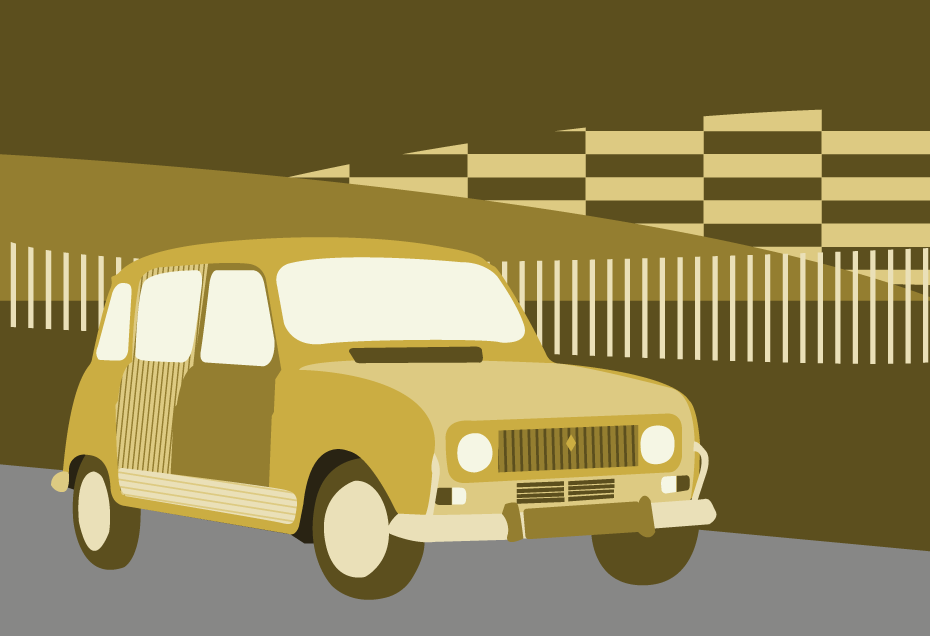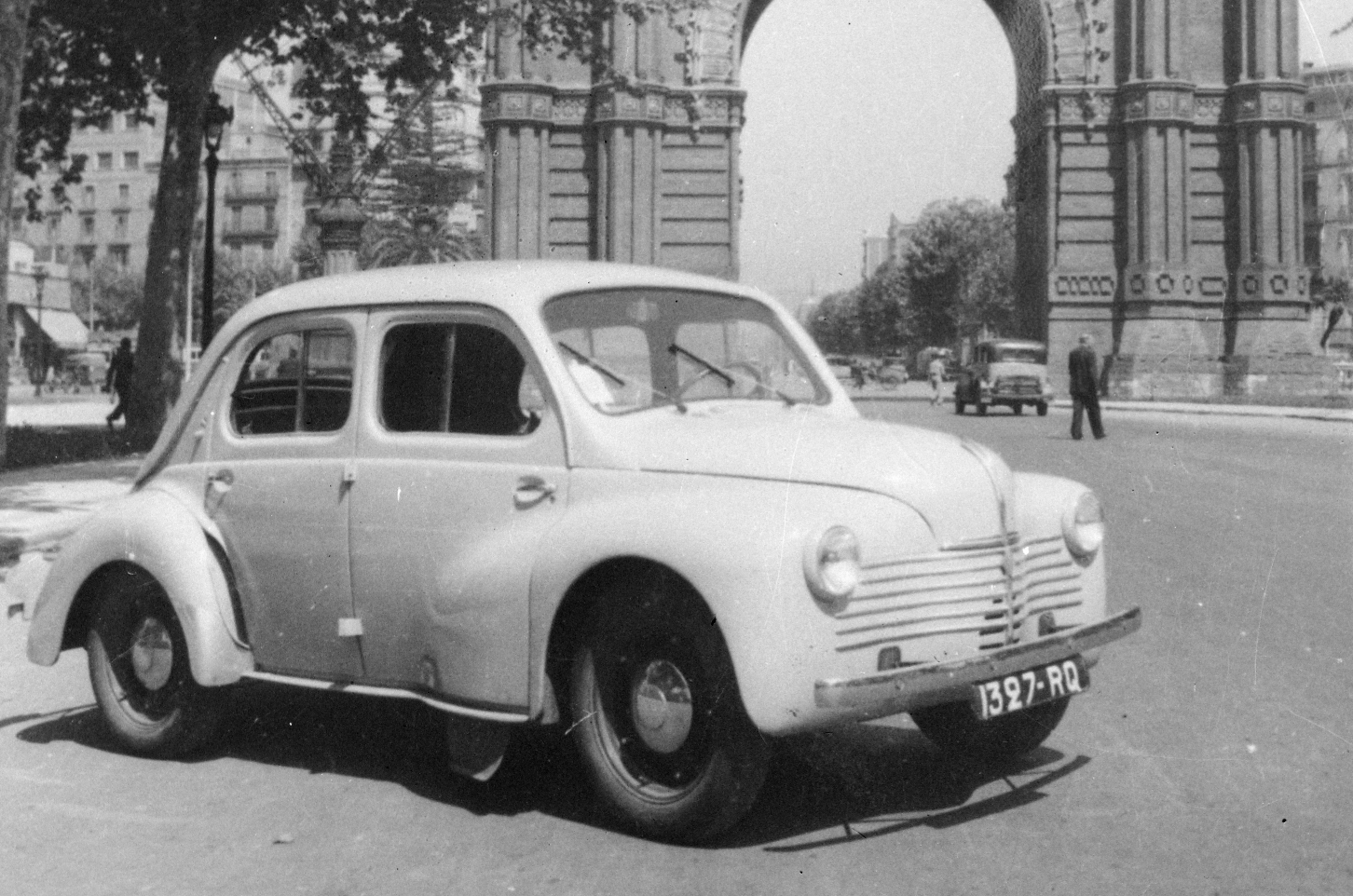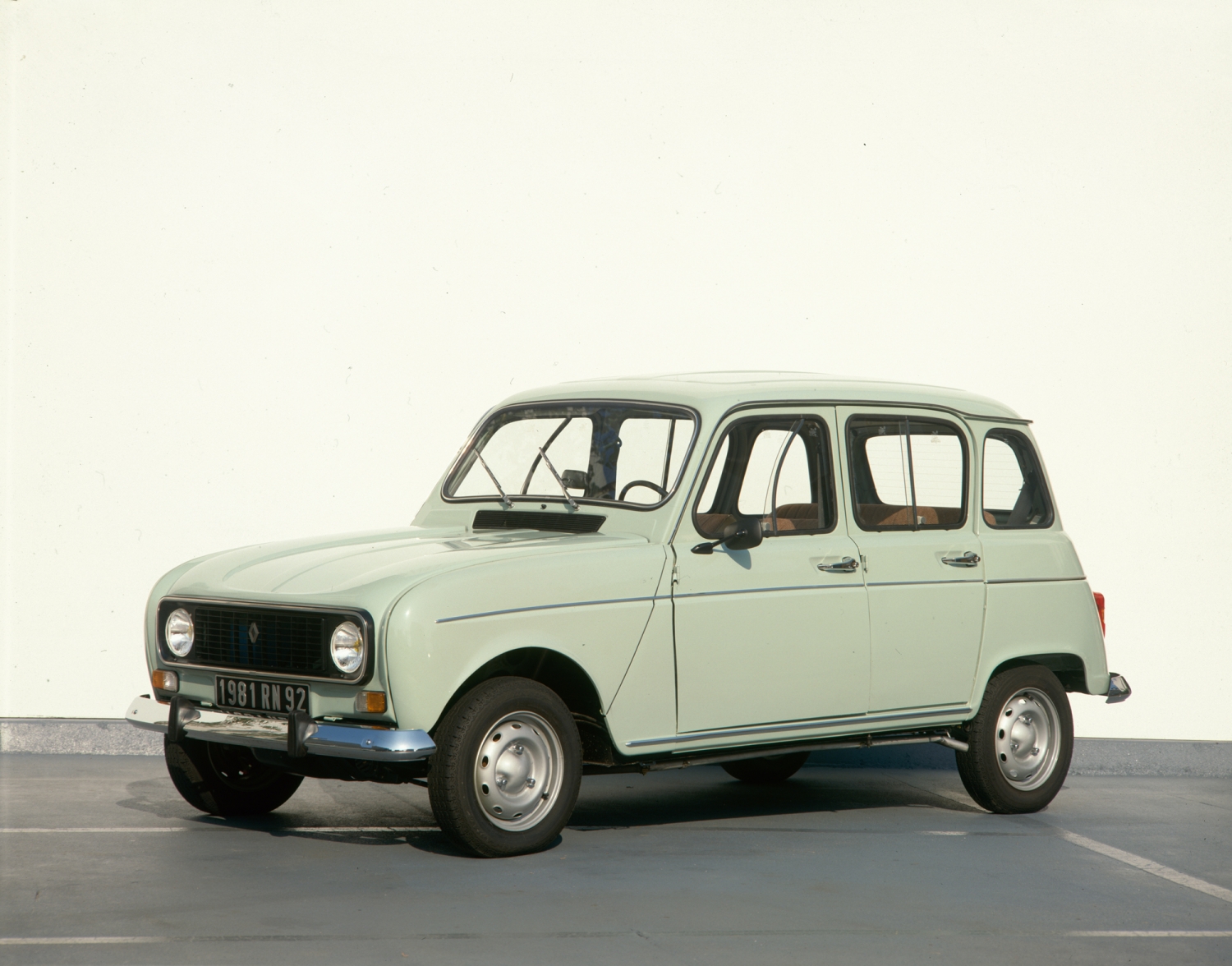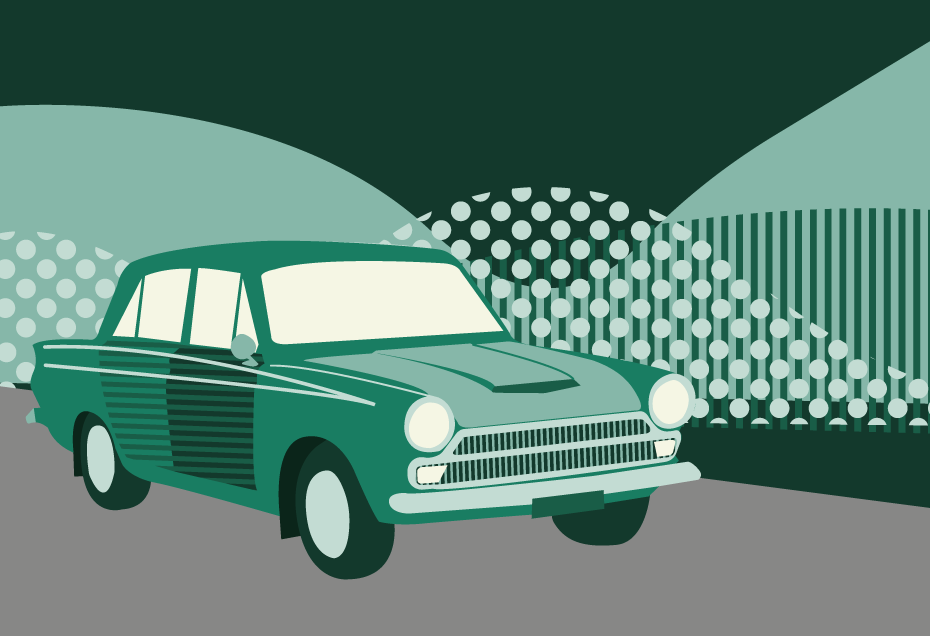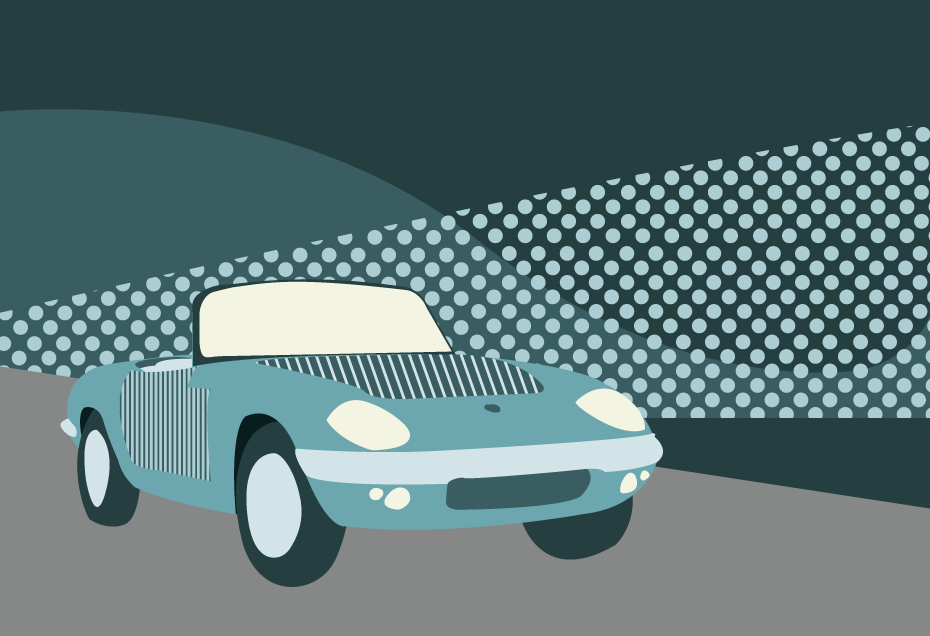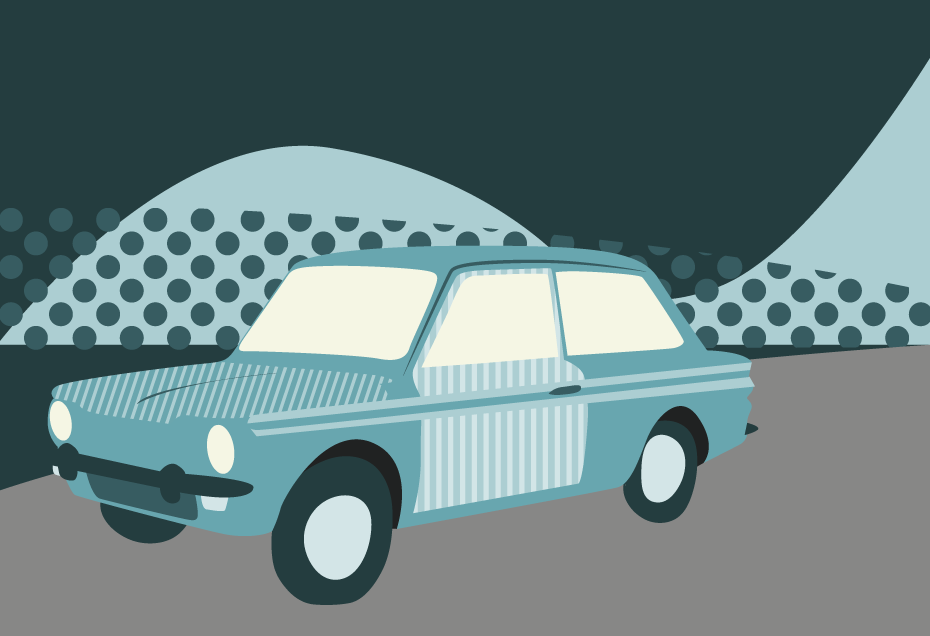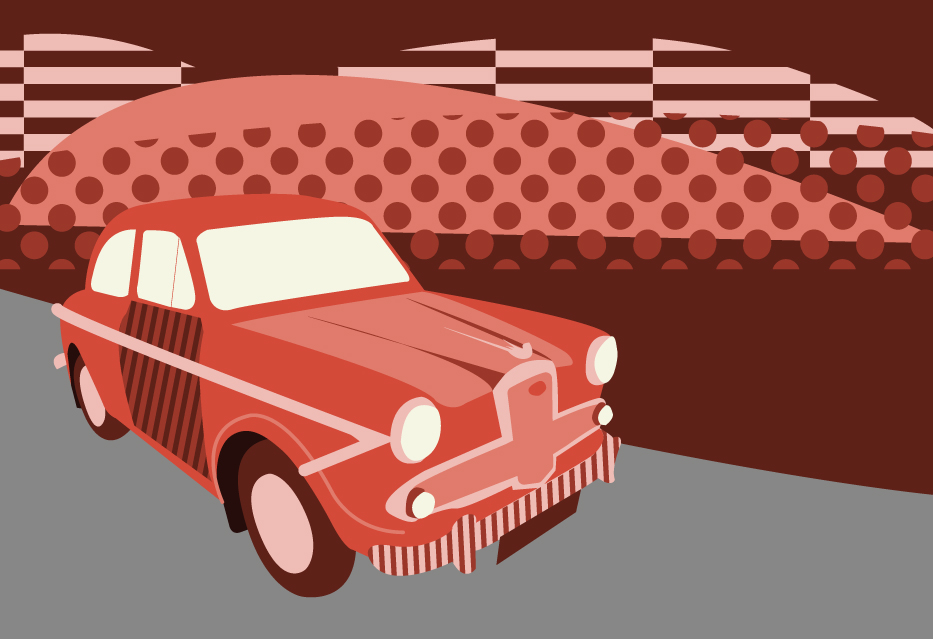Think of an unconventional, idiosyncratic French people’s car, and the Citroen 2CV is bound to spring to mind.
Yet the Renault 4, almost forgotten in the UK, comfortably outsold the famous ‘tin snail’ to become the best-selling French car of all time, with more 8million produced.
We look at the car that sold all over the world during a 31-year production run ending in 1992.
When Autocar first reviewed the Renault 4L in 1962, the magazine could see the good sense in a basic, go-anywhere car capable of carrying large loads over bad roads – just not in the UK.
Its characteristics made it ideal for African and Asian markets, “however, to say that it would sell well in the United Kingdom would perhaps be the remark of a real optimist”.
How wrong they were, the 4’s cheap price, almost maintenance-free engine and, as Renault’s press release declared, ability to carry “children, prams, wives, groceries, husbands, dogs, bags, baggage and room to spare” playing equally well in the UK as it did overseas.
It may have been Renault’s answer to the 2CV, similarly designed to carry a basket of eggs over a ploughed field without breaking any, but it could also easily convert into a van with the simple removal of the rear seat.
The 4 also broke new ground for Renault as the company’s first front-engined, front wheel drive family car.
Given that the 2CV, which had brought affordable motoring to people on low incomes in France, was launched in 1948, Citroen’s domestic rival took its time to react.
This watching brief allowed Renault to cherry pick the best bits from its ageing competitor, with a more modern design compared to a car originally penned back in the 1930s.
The 2CV’s air-cooled, two-cylinder engine, with a top speed of just 45mph in the late 1950s, was also relatively complicated, with many moving parts that required maintenance and lubrication at intervals as low as every 1,000 miles.
So Renault’s chairman Pierre Dreyfus knew exactly what he was aiming at when, in 1956, he delivered a brief to design a replacement for the rear-engined 4CV: a people’s car to better the Citroen, cheap and easy to maintain and suitable for towns and rural areas alike.
Development and launch
Unsurprisingly, the Renault 4 shared many characteristics with the 2CV, long-travel suspension that enabled it to take poor road surfaces in its stride, rack and pinion steering, a large load capacity, and hammock-style seats.
However, the elimination of all grease nipples and a sealed radiator for the four-cylinder, 747cc water-cooled engine meant it required very little regular maintenance.
In theory, the cooling system was supposed to last for the lifetime of the car without attention.
The hatchback-style bootlid, four other doors and the ability to remove the rear seats made it a prodigious load carrier with easy access.
Launched at the Paris Motor Show in 1961, Renault employed a neat marketing tool which saw the car sit on an uneven rolling road.
Visitors could sit inside the car, undisturbed by the undulations, while the suspension took the strain of the erratic bumps.
For a year, the Renault 3 – featuring a 603cc engine in the same bodyshell – was sold alongside the 4, but demand was so low it was promptly dropped.
At launch, the 4 featured a three-speed gearbox specifically designed for the car, perhaps surprisingly given the 2CV already featured four gears.
The car was square and chunky, and had a minimum ground clearance of nearly 8 inches, sitting higher at the back, where the suspension had 12 inches of travel.
Like our illustration of the Renault 4 at the beginning of the article?
Download a free high-quality poster version here.
Renault 4 on the road
Autocar may not have thought the Renault 4 would catch the British public’s imagination, but the magazine was in no doubt of its brilliance at driving on poor-quality roads.
Maybe if they drove more in Norfolk, they might have understood its potential charms at home…
“Without doubt the most outstanding feature of the Renault 4L is its behaviour on very poorly surfaced roads and cross-country tracks,” it wrote.
“It is almost impossible to make the suspension bottom, and the car can be driven at incredible speed over severe undulations and through deep potholes while remaining almost on an even keel, with the passengers comfortable and the driver in full control.”
Admittedly, on a normal road it had a “slightly rolling gait, reminiscent of a recently shore-bound sailor”.
Despite its rocking and rolling appearance, the car held the road well, and could corner at a decent speed, allowing the driver to press on and get the best out of the high-revving 26.5hp engine.
Inside, the car was basic with “extremely simple and well-designed” hammock-style seats, and a push-pull gear lever sprouting from the dashboard.
The dash was less well-designed, with a scattergun approach employed for the knobs and dials, and the side windows operated on a slider rather than a winder.
As well as being cheap to buy, costing just £616 – less than a Mini – the Renault could return between 45 and 50mpg, making it cheap to run, even on the premium fuel it required.
Autocar praised the car’s “ability to cruise flat out for hour after hour”, albeit at speeds not exceeding 60mph, if you were lucky.
Of the 4’s design, Autocar conceded that it had character, “a keynote of the French motor industry”, but that “no artistic stylist spent sleepless nights pondering on this venture”.
“It is of strictly utilitarian design, and is intended as a purely basic and functional means of transport,” it added.
A larger engine
By 1963, most iterations of the Renault 4 utilised the larger 845cc engine from the Dauphine, and first gear also now had synchromesh.
The compression ratio was lowered to allow the car to run more smoothly on lower grade petrol, and top speed was now up to 70mph, despite a marginal increase in horsepower to 28.
The 4 still wasn’t exactly built for speed, taking 40.5 seconds to reach 60mph, but it did make it cruise more easily at motorway speeds.
“It hums along merrily and without much fuss at around 60mph,” wrote Autocar, which said the car could be “hustled along with surprising verve”.
The larger engine resulted in only a minor reduction in fuel economy, but the tiny petrol tank (5.75 gallons) meant refuelling every 200 miles or so.
That elastic suspension was still a thing to marvel at and, while it was most adept at riding rough terrain, it also provided an “exceptionally smooth ride over ordinary surfaces”.
The magazine got to the crux of the Renault 4 in its conclusion.
“One should judge the Renault 4L on a different basis from the typical British small car,” it said, “for its creators were clearly concerned not so much with fashionable aesthetics and dainty trim as with the essentials of an economical everyman’s vehicle.
“Four seats and four big doors, scarcely a cubic inch of useless space that cannot carry something, a suspension system that can cope with ploughed field and boulevard alike, the minimum need for routine servicing and, of course, a low selling price – these were obviously the design criteria, which have been fulfilled much more than adequately.”
Adrian Flux Classic Car Insurance
Renault 4 in the 1970s
By the 1970s, the Renault 4 had more than fulfilled its brief as a global car, with manufacturing lines in South America, Australia and across Europe including Italy, Slovenia, Finland and Croatia.
The car had remained largely unchanged, with only cosmetic alterations along the way, including a larger, aluminium grille wrapped around the headlights in 1968, itself replaced by a plastic grille in 1974.
Citroen had introduced the Dyane version of the 2CV back in 1967, the only real difference a hatchback rear end to rival the 4’s five-door approach.
Both cars were still aimed squarely at the budget end of the market, a sector that was transformed by the oil crises of the early to mid ‘70s, as CAR magazine reported in March 1975, pitting the 4 against a Dyane 6 and the new Lada 1200.
Renault and Citroen dealers were struggling to keep up with demand for their frugal little cars, and the customer profile was changing.
“Whereas a year or 17 months ago, Dyane and Renault 4 customers were usually professional people like doctors, professors and architects who bought the cars as the family’s second vehicle or commuter runabout, the throngs coming through the showrooms doors now are folk of a different flock,” the magazine wrote.
“The dealers will tell you they are being astounded day after day: quite apart from the group of solid family men who never before would have considered something so strange, businessmen are seeking to downtrade from the likes of Rovers, Jaguars and Granadas.”
The grim fuel situation gave the 4, by now famed for its robustness and reliability, a new lease of life.
All three cars were priced just over the £1,000 mark, with the Lada – basically a Russian Fiat 124 – the most expensive at £1,099.
In truth, the price was the only thing the three-box Lada had in common with the two French motors, which were very much cut from the same cloth.
Despite losing out to the Lada on engine size, the magazine said “you rarely seem to be wanting for performance” in the French cars.
“The light weight, the marvellous flexibility of both engines and thoughtfully chosen gear ratios mean that they are not in the least fussed about keeping up with town traffic,” it added.
“On the motorway, both cars are entirely happy to cruise at 70mph with a full load on board. They are designed to take a beating without complaining.”
The Dyane and the 4 both understeer gently and body roll strongly, but cling to the road with surprising ease, whatever it may look like from the outside.
“To the uninitiated, they look strange, even frightening as they flop and heave their way around corners,” said CAR. “From the inside, however, there is a distinct lack of drama.
“They whip around bends at sustained and very rapid speeds, allowing the driver to keep the little engines churning away.
“The funny froggies sort of lurch and heel in a most alarming-looking fashion, but it’s all great fun for the driver – present in his mind all the time is the vision of this weird little tin can belting down the road, spewing Gauloises fumes, a sow and piglets resident in the boot and a beret clapped on his head.”
National stereotypes apart (this was the 1970s), the venerable French cars still offered a ride unmatched by any car priced under £2,000, and all with a fuel economy that wouldn’t drop below 41mpg no matter how hard they were driven.
Choosing between the two was, according to the magazine, “a matter of personal taste”, with the Renault the less outlandish and eccentric.
“They are superbly conceived vehicles with real honesty; they relate to today’s family motoring as few other cars can, and they offer real value for money, now and as you drive.”
More power as 4 soldiers on
By the 1980s, the Renault 4 was clearly outdated but, at the beginning of the decade, it remained hugely popular, selling 1,500 a day – as many as it had ever done since launching in 1961.
The Renault 4GTL’s 1100cc engine, detuned to improve torque and economy at the expense of top end performance, at least made it easier to keep up with the increasing pace of modern traffic.
Motor and Autocar both drove the same test car, which by now was competing – on its £3,050 price at least – with much more modern five-door hatches including the Citroen Visa Club, Daihatsu Charade, and Toyota Starlet.
In many ways, the Renault was clearly inferior – it was one of the few cars still using drum brakes all round, it was slow despite its bigger engine, and its heating, ventilation, ergonomics, visibility, finish and equipment “would have seemed outdated in 1970”, according to Motor.
“In 1980 they ought to be unacceptable,” it added.
So why was it still selling so well?
“It still reigns virtually supreme in its ability to carry large and dirty loads over bad roads,” explained the magazine. “And because of its economy, practicality and intangible asset called character, Renault will have little difficulty shifting the 4000+ GTLs they expect to sell this year.”
Autocar described a “motorised shopping basket”, and “an eminently practical if not very glamorous means of transport”.
The increase in engine size from 850cc to 1100cc simply made it “a better, more efficient shopping basket”.
“To stylists and the marketing department, the 4 must have been a nightmare,” said the magazine. “It sits there, awkward, a mixture of curves and straight lines. And the public love them – to the extent that six million have been sold.”
Renault 4 varieties and special editions
Throughout its life, the Renault 4 came in a variety of special editions and conversions, including the hugely successful Fourgonette panel van which became the archetypical French ‘boulangerie’ van.
Special colour schemes and upholstery were offered on the Safari, Sixties and Jogging editions, while the Clan and Savane were standard models with special decals.
The Plein Air model was roofless, doorless version originally developed for the French Army but adopted by Sinpar, converted to four-wheel-drive and marketed as a fun beach car in the late 1960s. Only 563 were built.
A full-bodied, four-wheel-drive Sinpar was entered in the Paris-Dakar Rally in 1979 and 1980 by Bernard and Claude Marreau, coming fifth in 1979 and in third in 1980.
End of the road
As the 1980s progressed, “Methusula cars” like the Renault 4, 2CV, Mini and Beetle were coming to the end of the road.
Their popularity never truly waned, but they were anachronistic throwbacks that had only remained in production because they were still selling well.
But time waits for no car, and technologically more advanced cars like the Metro, Golf, Polo, Citroen AX and Renault 5 attracting consumers.
The 4 continued in production throughout the ‘80s, with the final 1,000 models marketed as “Bye-Bye” cars, each with a numbered plaque.
The last car rolled off the production line in December 1992, replaced in European markets by the entry-level Twingo, only made available in right hand drive with 2007’s Mk2, and still going today.
Once a common site on the UK’s roads, there are now fewer than 250 examples registered for road use, according to How Many Left.
In contrast, there are nearly 3,000 Citroen 2CVs and Dyanes still going.
The 4 didn’t have the 2CV’s pre-war looks and it never fully gained the Citroen’s cult status in this country, but it deserves better.
It was arguably a better car.


